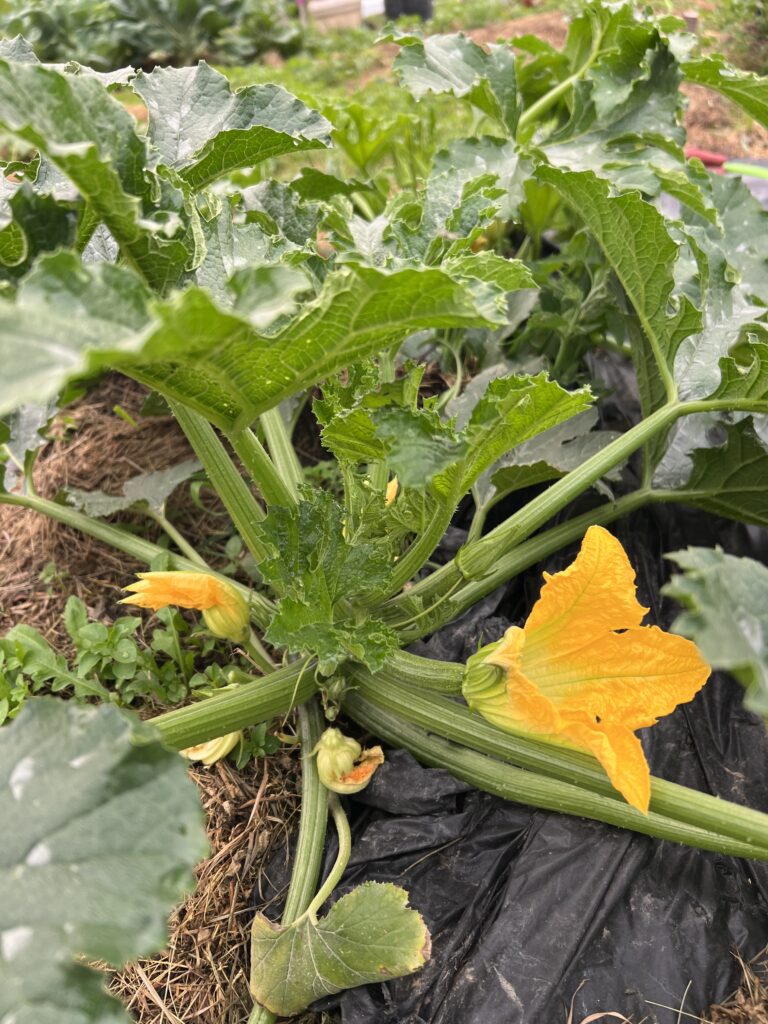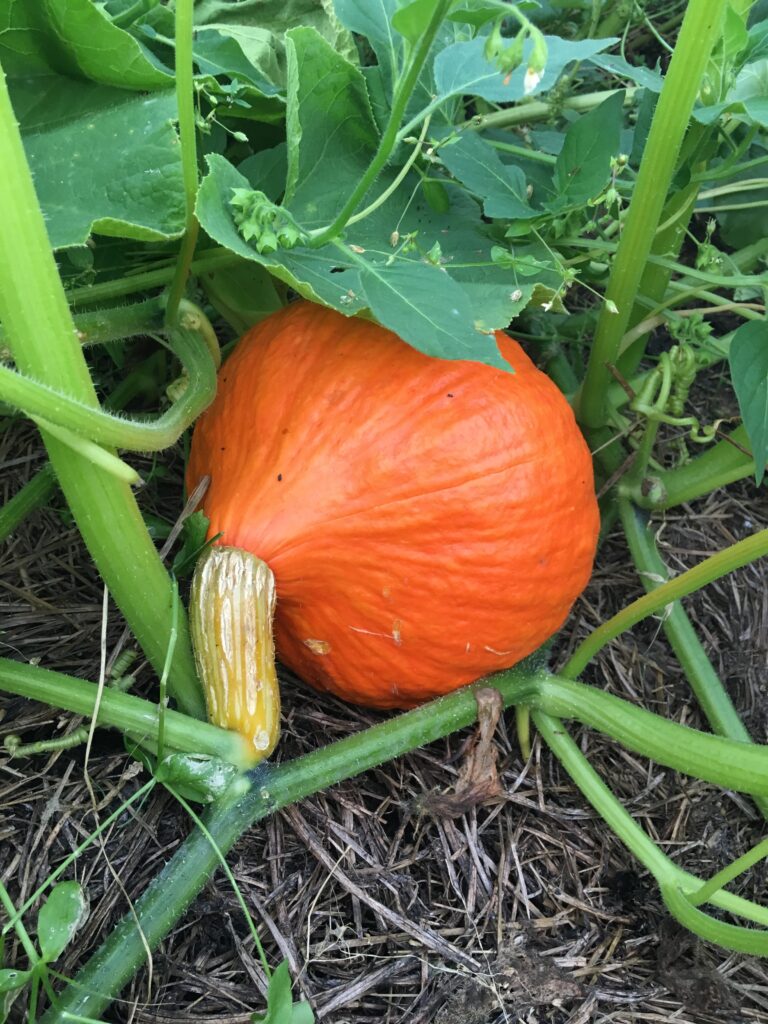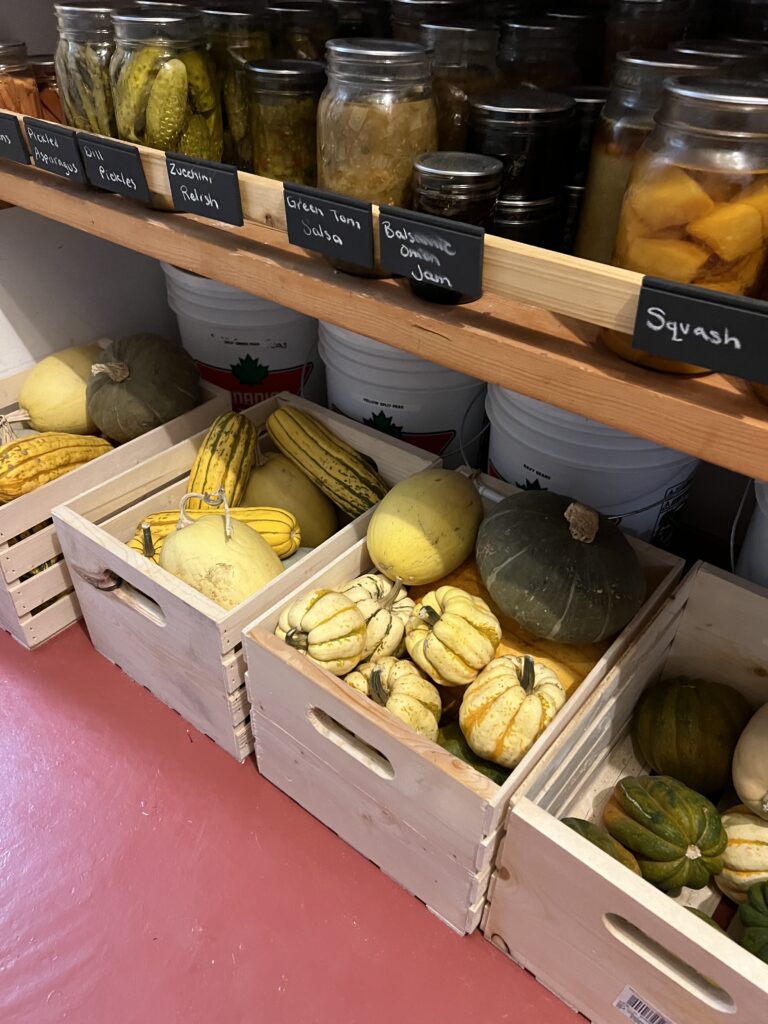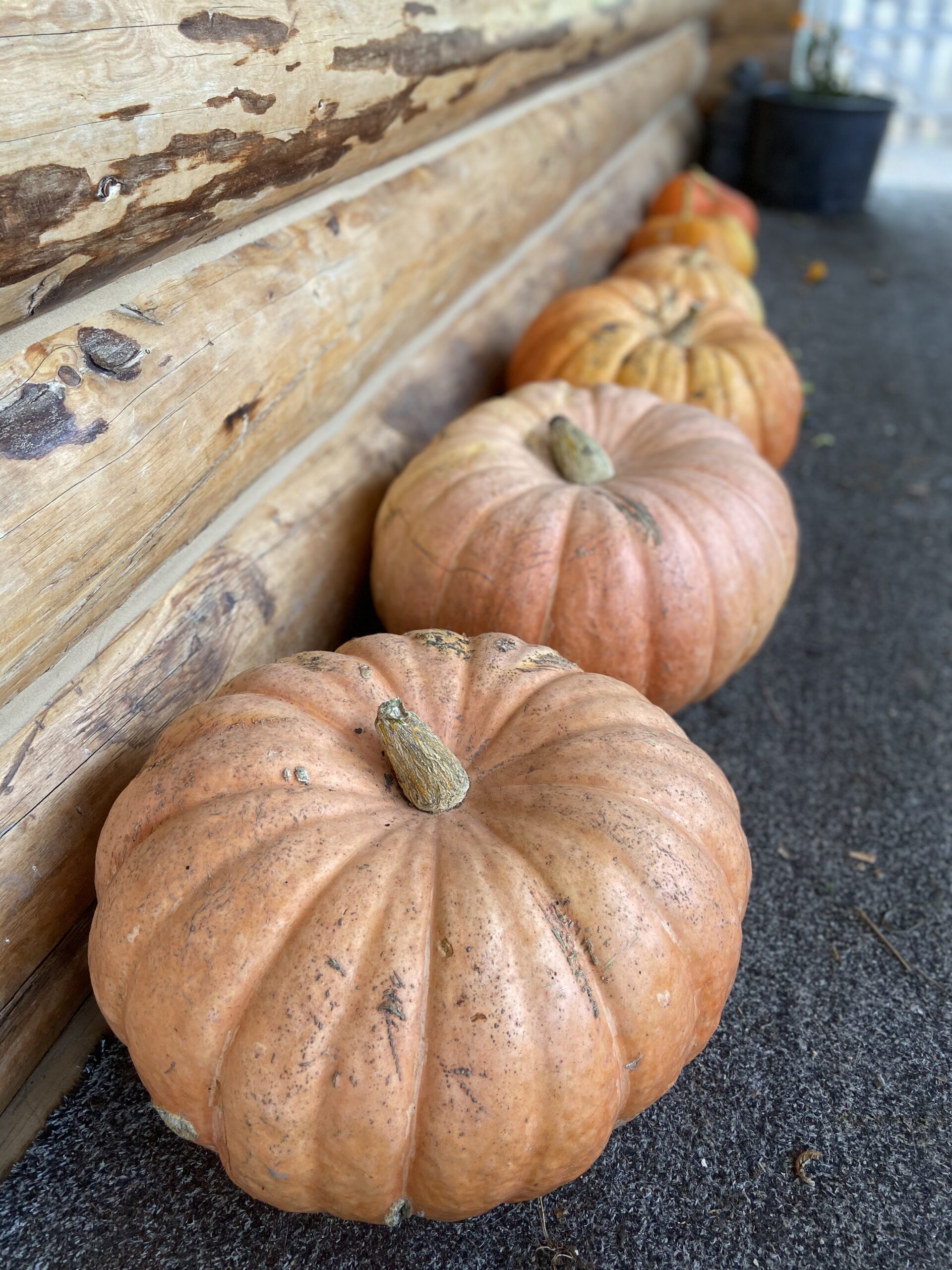Squash is one of those vegetables that is very easy to grow and one of my favorites! For the most part, growing squash can be very hands-off if done the proper way. Follow my guide, and you will learn how to sit back and watch your squash seeds grow into squash plants that flourish.
Types of Squash Plants
There are two main categories of squash: winter squash and summer squash. Both of these are easy to grow but are harvested at different times.
Two of the most common summer squashes are zucchini and yellow squash. Summer squash varieties are referred to as summer squash because they have a 45-55 day span of growing prior to harvest. This means that they are planted after the last frost and harvested around mid summer. They are able to be enjoyed throughout the mid and late summer months. Summer squash is best if used within the first three days of being picked. If placed in the refrigerator, it will store for up to 2 weeks. They generally aren’t considered storage-type squash, although I have stored mature zucchinis well into the winter in a cool, dark, dry location. Summer squash varieties are bush style plants.
Winter varieties, on the other hand, are planted after the last frost and not harvested for 75 to 120 days. They are generally enjoyed during the cooler winter months. Winter squashes have a much longer shelf life after harvest compared to summer squash. When stored in the proper conditions, winter squash can be stored for 4-6 months. Spaghetti squash, even longer! I have had them for 12 months in storage, and while they didn’t taste the best and the seeds were sprouting on the inside, they weren’t rotten. Summer squash is best if used within the first three days of being picked. If placed in the refrigerator, it will be stored for up to 2 weeks.
Both types of squash are generally sown in late May or early June for growing zones 3-5.

Direct Sowing Vs Seed Starting
Direct sowing the squash is usually the more common method, but I generally give my seeds a head start by starting them 3-4 weeks before it is time to plant them outdoors. When you direct sow squash plants, you will place three seeds in a hill and cover them with dirt, but when you start indoors, you will sow seeds one per pot.
It is possible to succession plant summer squash, but winter squash has a growing period that is too long for succession planting in the cooler growing zones. If you choose to succession plant squash, you will want to plant them two weeks apart. For instance, you can start the first round 2 weeks before your last frost date and then start the second round when you plant your transplant seedlings.
Preparing the Garden
Prior to planting the squash seeds, you will need to prepare your garden bed. Pick a spot where the plants will get full sun. Squash plants require 6-8 hours of sun. Squash can be grown in the ground or in a raised bed. No matter how you choose to grow your squash plants, you need to take a few basic steps to prepare your soil prior to sowing the seeds.
Add some organic matter via compost or well rotted manure and mix it together. This will ensure that you have fertile soil. You can test your soil if desired, but adding new compost and fertilizer will almost always ensure a great growing season.
Rake, hoe, or fork the soil prior to planting your seeds. Squash plants prefer to grow in loose, well-drained soil.
Form 12″ diameter mounds where you plan to sow the seeds. Each mound should be 3 square feet apart and elevated 6 inches high.
Planting the Seeds
You have now confirmed that you are no longer in danger of frost and prepared the soil in your vegetable garden. At this point in the process, your garden soil temperatures should be around 60*F.
There are many different ways that people sow their squash seeds, but the easiest way I have found is to simply just push them into the ground or seed-starting pot. There is not really a way to properly place the seedlings into the ground as they will naturally orient themselves once sprouted, but there is a way to make it easier for the seedlings to sprout.
A squash seed is usually teardrop shaped. The point of the teardrop is the part of the seeds that the roots emerge from. So, when planting them, you can place them in the soil so the pointed side is down or just simply push them into the soil so they are flat. Once you have placed the seeds into the soil, you will need to cover them with 1 inch of soil. The seeds need to be placed an inch deep so that they can form strong roots.
In a quick summary, you will place three seeds onto the prepared soil mound and cover them with one inch of dirt. Once the seeds are covered with dirt water them generously, but not so much that they are water-logged.

Ground or Trellis
Squash plants can be grown on the ground or on a trellis. Both summer squash and winter squash have the ability to be trellised. It is easier to trellis vining winter squash compared to the bush types of summer squash.
To trellis winter squash, you will need a heavy-duty cattle or utility panel, metal or wooden posts, and possibly a netting to hold the heavy squash up. Place your posts into the ground so that they are sturdy, then attach your cattle panel to it at a 30-45-degree angle. Plant your seedlings or seeds at the base of the trellis. As they grow, you may have to train them to wrap around the trellis. When the squash starts to form and become large fruit, you may need to place a net under them to help support them, but it is not always necessary.
Trellising squash plants can help prevent fungal diseases. Fungal disease is caused from low air circulation and trapped moisture in the plant.

Common Pests and Diseases
Squash plants are prone to many different pests and diseases, but which ones you’ll have to deal with will very much depend on your area. There are a lot of temperature-related challenges to growing a garden in the north where we are, but thankfully, pests and diseases aren’t among the challenges we face. I’ve done some digging for you to find out some ways to assist you if you do deal with diseases and pests in your climate.
Types of Pests
- Squash Vine Borers
- Identification: Look for larvae that burrow into the stems, causing the plants to wilt and die.
- Remedy: Cut open the affected stems and remove the larvae by hand. Cover the stem with soil to encourage new root growth. Alternatively, use row covers to protect plants from adult moths laying eggs.
Climate: Common in warm, humid climates.
- Aphids
- Identification: Small, green, or black insects that cluster on new growth and suck plant juices.
- Remedy: Spray plants with a strong stream of water to knock off aphids. Introduce beneficial insects like ladybugs and lacewings. Use insecticidal soap or neem oil as a last resort.
- Climate: Thrives in warm, dry conditions but can appear in various climates.
- Squash Bugs
- Identification: Brown or gray insects that suck sap from the leaves, causing wilting.
- Remedy: Hand-pick bugs and eggs off the plants. Place boards near plants overnight and check underneath them in the morning to find and remove hiding bugs. Use insecticidal soap for severe infestations.
- Climate: Prefers warm, dry climates.
- Cucumber Beetles
- Identification: Striped or spotted beetles that feed on leaves and flowers and spread bacterial wilt.
- Remedy: Use yellow sticky traps to catch adult beetles. Apply floating row covers to protect young plants. Rotate crops annually to disrupt the beetle’s life cycle.
- Climate: Found in a variety of climates, such as hot and moist environments.
Common Diseases
- Bacterial Wilt
- Identification: Causes sudden wilting and death of plants, spread by cucumber beetles.
- Remedy: Remove and destroy infected plants immediately. Control cucumber beetle populations to prevent the spread of the disease.
- Climate: Common in warm, humid climates.
- Powdery Mildew
- Identification: White, powdery fungus on leaves, reducing photosynthesis.
- Remedy: Ensure good air circulation around plants by spacing them properly. Water plants at the base to keep foliage dry. Apply fungicides like sulfur or potassium bicarbonate if needed.
- Climate: Thrives in warm, dry climates with high humidity.
- Mosaic Viruses
- Identification: Mottled or distorted leaves and fruit, spread by aphids.
- Remedy: Remove and destroy infected plants. Control aphid populations with natural predators or insecticidal soap. Plant-resistant varieties, if available.
- Climate: This can occur in various climates but is more common in warm, humid areas.

Like I mentioned at the outset, I love to grow squash! It is fun, fairly easy, and so rewarding. I often say that harvesting squash feels like a treasure hunt with such a beautiful, bountiful reward at the end.
Let me not forget to mention that our family’s favorite way to eat squash is candied! You can find our recipe here.
Don’t hesitate to drop your questions below!
If growing vegetables is new to you, I have a guide about what tomatoes grow in cold weather areas and a general overview of tomatoes.
Happy gardening, friend!



